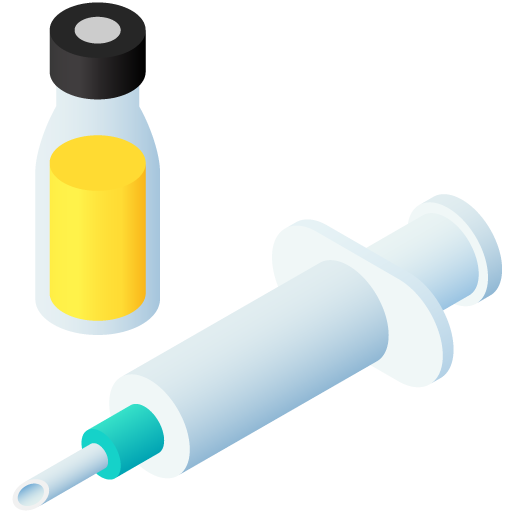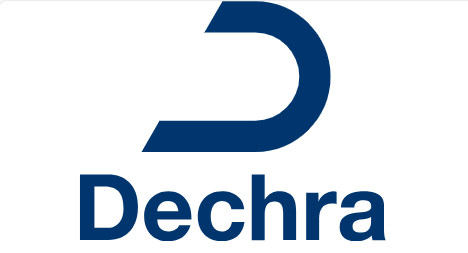Similar packages
Nerfasin vet.
Active substance
ATC code
Species
Cattle (≥ 200 kg) and horses.
Indications
Sedation.
Premedication in combination with an anaesthetic.
Dose to be administered and administration route
Cattle: intramuscular.
Horses: intravenous.
To ensure a correct dosage body weight should be determined as accurately as possible.
The intravenous injection to horses should be given slowly.
Cattle:
Dosage:
|
Dosage for cattle |
|||
|
Dosage level* |
xylazine (mg/kg) |
Nerfasin vet. 100 mg/ml (ml/100 kg) |
Nerfasin vet. 100 mg/ml (ml/500 kg) |
|
I |
0.05 |
0.05 |
0.25 |
|
II |
0.1 |
0.1 |
0.5 |
|
III |
0.2 |
0.2 |
1 |
|
IV |
0.3 |
0.3 |
1.5 |
*Dose 1: Sedation, with a slight decrease of muscle tone. The ability to stand is maintained.
Dose 2: Sedation, marked decrease of muscle tone and some analgesia. The animal usually remains standing, but may lie down.
Dose 3: Deep sedation, further decrease of muscle tone and a degree of analgesia. The animal lies down.
Dose 4: Very deep sedation, a profound decrease in muscle tone and a degree of analgesia. The animal lies down.
Horses
Dosage: single dose of 0.6-1 mg xylazine per kg body weight.
(0.6-1 ml product per 100 kg body weight).
The stopper should not be punctured more than 20 times.
The number of punctures should be recorded on the outer packaging
Adverse reactions
In general, side effects, typical for an α2-adrenergic agonist, like bradycardia, reversible arrhythmia and hypotension can occur. Thermoregulation can be influenced and consequently body temperature can decrease or increase dependant on the ambient temperature. Depression of respiration and / or respiratory arrest can occur.
Cattle
• In cattle xylazine may induce premature parturition, and it also reduces implantation of the ovum.
• Cattle, which have received high doses of xylazine sometimes suffer from loose faeces for 24 hours afterwards.
• Other adverse reactions include snoring, profound salivation, ruminal atony, atony of the tongue, regurgitation, bloating, nasal stridor hypothermia, bradycardia, increased urination and reversible prolapse of the penis.
Horses
• Horses often sweat as the effects of the sedation are wearing off.
• Severe bradycardia and reduced respiratory rate have been reported especially in horses.
• Following administration to horses, a transient rise followed by a fall in blood pressure usually occurs.
• More frequent urination has been reported
• Muscle tremors and movement in response to sharp auditory or physical stimuli are possible. Although rare, violent reactions have been reported in horses following the administration of xylazine.
• Ataxia and reversible prolapse of the penis may occur.
• In very rare cases xylazine may induce mild colic as the gut motility is depressed temporarily. As a preventive measure the horse should receive no feed after sedation until the effect has faded completely.
The frequency of adverse reactions is defined using the following convention:
- very common (more than 1 in 10 animals displaying adverse reaction(s) during the course of one treatment)
- common (more than 1 but less than 10 animals in 100 animals)
- uncommon (more than 1 but less than 10 animals in 1,000 animals)
- rare (more than 1 but less than 10 animals in 10,000 animals)
- very rare (less than 1 animal in 10,000 animals, including isolated reports).
Dispensing
POM-VSUMMARY OF PRODUCT CHARACTERISTICS 1. NAME OF THE VETERINARY MEDICINAL PRODUCT
Nerfasin 100 mg/ml, solution for injection for cattle and horses
2. QUALITATIVE AND QUANTITIVE COMPOSITION
Per ml:
Active substance:
Xylazine (as hydrochloride) 100.0 mg
(equivalent to 116.55 mg xylazine hydrochloride)
Excipients:
Methyl parahydroxybenzoate (E218) 1.0 mg
For the full list of excipients, see section 6.1.
3. PHARMACEUTICAL FORM
Solution for injection.
Clear, colourless solution.
4. CLINICAL PARTICULARS
4.1 Target species
Cattle (≥ 200 kg) and horses.
4.2 Indications for use, specifying the target species
Sedation.
Premedication in combination with an anaesthetic.
4.3 Contraindications
• Do not use in case of hypersensitivity to the active substance or to any of the excipients.
• Do not use in animals with gastrointestinal obstruction as the muscle relaxant properties of the drug appear to accentuate the effects of the obstruction and because of possible vomiting.
• Do not use in animals with severe renal or hepatic impairment, respiratory dysfunction, cardiac abnormalities, hypotension and/or shock.
• Do not use in diabetic animals.
• Do not use in animals with a history of seizures.
• Do not use in cattle weighing less than 200 kg bodyweight. Do not use in foals younger than 2 weeks.
• Do not use during the last stage of pregnancy (danger of premature birth), except at parturition (see section 4.7).
4.4 Special warnings for each target species
Horses:
• Xylazine inhibits the normal intestinal motility. Therefore, it should only be used in horses with colic, that are not responsive to analgesics. The use of xylazine should be avoided in horses with caecal malfunction.
• After treatment of horses with xylazine, the animals are reluctant to walk, so whenever possible the drug should be administered in the place where the treatment/investigation is going to take place.
• Caution should be taken in the administration of the product to horses susceptible to laminitis.
• Horses with airway disease or malfunction may develop life-threatening dyspnoea.
• The dose should be kept as low as possible.
• The association with other pre-anaesthetic agents or anaesthetic agents should be the subject of a benefit/risk assessment. This assessment should consider the composition of the products, their dose and the nature of the surgery. Recommended dosages are likely to vary according to the choice of the anaesthetic association.
Cattle:
• Ruminants are highly susceptible to the effects of xylazine. Normally cattle remain standing at the lower doses, but some animals may lie down. At the highest recommended doses most animals will lie down and some animals may lapse in lateral recumbency.
• Reticulo-ruminal motor functions are depressed after injection of xylazine. This may results in bloat. It is advisable to withhold feed and water for several hours before administration of xylazine.
• In cattle the ability to eructate, cough and swallow is retained but reduced during the period of sedation, therefore cattle must be closely watched during the recovery period: the animals should be maintained in sternal recumbency.
• In cattle life threatening effects may occur after intramuscular doses above 0.5 mg/kg body weight (respiratory and circulatory failure). Therefore very precise dosing is required.
• This product should only be used in cattle weighing 200 kg or more. Since it is highly concentrated, a slight deviation from the actual volume to be injected may cause serious adverse reactions. In case cattle weighing less than 200 kg need to be treated, xylazine with a lower strength should be used (e.g. 20 mg/ml).
• The association with other pre-anaesthetic agents or anaesthetic agents should be the subject of a benefit/risk assessment. This assessment should consider the composition of the products, their dose and the nature of the surgery. Recommended dosages are likely to vary according to the choice of the anaesthetic association.
4.5 Special precautions for use
Special precautions for use in animals
Keep the animals calm, because they may respond to external stimuli.
Avoid intra-arterial administration.
Tympany may occasionally occur in recumbent cattle and can be avoided by maintaining the animal in sternal recumbency.
To avoid aspiration of saliva or food, lower the animal’s head and neck. Fast the animals before use of the product.
• Older and exhausted animals are more sensitive to xylazine, whilst nervous or highly excitable animals may require a relatively high dose.
• In case of dehydration, xylazine should be used cautiously.
• Do not exceed the recommended dosage.
• Following administration animals should be allowed to rest quietly until the full effect has been reached.
• It is advised to cool animals when the ambient temperature is above 25°C and to keep animals warm at low temperatures.
• For painful procedures, xylazine should always be used in combination with local or general anaesthesia.
• Xylazine produces a certain degree of ataxia; therefore, xylazine must be used cautiously in procedures involving the distal extremities and in standing castrations in the horse.
• Treated animals should be monitored until the effect has faded totally (e.g.
cardiac and respiratory function, also in the post-operative phase) and should be segregated to avoid bullying.
Special precautions to be taken by the person administering the veterinary medicinal product to animals
• Care should be taken to avoid accidental self-injection. In case of accidental oral intake or self-injection, seek medical advice immediately and show the package leaflet to the physician but DO NOT DRIVE as sedation and changes in blood pressure may occur.
• Avoid skin, eye or mucosal contact.
• Wash the exposed skin immediately after exposure with large amounts of water.
• Remove contaminated clothes that are in direct contact with skin.
• In the case of accidental contact of the product with eyes, rinse abundantly with fresh water. If symptoms occur, seek the advice of a physician.
• If pregnant women handle the product, special caution should be observed not to self-inject as uterine contractions and decreased foetal blood pressure may occur after accidental systemic exposure.
Advice to doctors:
Xylazine is an α2-adrenoreceptor agonist, symptoms after absorption may involve clinical effects including dose-dependent sedation, respiratory depression, bradycardia, hypotension, a dry mouth and hyperglycaemia. Ventricular arrhythmias have also been reported. Respiratory and haemodynamic symptoms should be treated symptomatically.
4.6 Adverse reactions (frequency and seriousness)
In general, side effects, typical for an α2-adrenergic agonist, like bradycardia, reversible arrhythmia and hypotension can occur. Thermoregulation can be influenced and consequently body temperature can decrease or increase dependant on the ambient temperature. Depression of respiration and / or respiratory arrest can occur.
Cattle
• In cattle xylazine may induce premature parturition, and it also reduces implantation of the ovum.
• Cattle, which have received high doses of xylazine sometimes suffer from loose faeces for 24 hours afterwards.
• Other adverse reactions include snoring, profound salivation, ruminal atony, atony of the tongue, regurgitation, bloating, nasal stridor hypothermia, bradycardia, increased urination and reversible prolapse of the penis.
Horses
• Horses often sweat as the effects of the sedation are wearing off.
• Severe bradycardia and reduced respiratory rate have been reported especially in horses.
• Following administration to horses, a transient rise followed by a fall in blood pressure usually occurs.
• More frequent urination has been reported
• Muscle tremors and movement in response to sharp auditory or physical stimuli are possible. Although rare, violent reactions have been reported in horses following the administration of xylazine.
• Ataxia and reversible prolapse of the penis may occur.
• In very rare cases xylazine may induce mild colic as the gut motility is depressed temporarily. As a preventive measure the horse should receive no feed after sedation until the effect has faded completely.
The frequency of adverse reactions is defined using the following convention:
- very common (more than 1 in 10 animals displaying adverse reaction(s) during the course of one treatment)
- common (more than 1 but less than 10 animals in 100 animals)
- uncommon (more than 1 but less than 10 animals in 1,000 animals )
- rare (more than 1 but less than 10 animals in 10,000 animals)
- very rare (less than 1 animal in 10,000 animals, including isolated reports).
4.7 Use during pregnancy, lactation or lay
Although laboratory studies in rats have not shown any evidence of teratogenic or foetotoxic effects the use of the product during the first two trimesters of pregnancy should only be made according to the benefit/risk assessment by the responsible veterinarian.
Do not use in the later stages of pregnancy (particularly in cattle) except at parturition, because xylazine causes uterine contractions and it may induce premature labour.
Do not use in cattle receiving ovum transplants as the increased uterine tone may reduce the chance of implantation of the ovum.
4.8 Interaction with other medicinal products and other forms of interaction
Other CNS depressant agents (barbiturates, narcotics, anaesthetics, tranquillizers, etc.) may cause additive CNS depression if used with xylazine. Dosages of these agents may need to be reduced. Xylazine should therefore be used cautiously in combination with neuroleptics or tranquillizers.
Xylazine should not be used in combination with sympathomimetic drugs such as epinephrine as ventricular arrhythmia may follow.
The concurrent intravenous use of potentiated sulphonamides with alpha-2 agonists has been reported to cause cardiac arrhythmias which may be fatal. Whilst no such effects have been reported with this product, it is recommended that intravenous administration of Trimethoprim/Sulphonamide containing products should not be undertaken when horses have been sedated with xylazine.
4.9 Amounts to be administered and administration route
Cattle: intramuscular.
Horses: intravenous.
To ensure a correct dosage body weight should be determined as accurately as possible.
The intravenous injection to horses should be given slowly.
Cattle:
Dosage:
|
Dosage for cattle |
|
|
|
|
Dosage level* |
xylazine (mg/kg) |
Nerfasin vet. 100 mg/ml (ml/100 kg) |
Nerfasin vet. 100 mg/ml (ml/500 kg) |
|
I |
0.05 |
0.05 |
0.25 |
|
II |
0.1 |
0.1 |
0.5 |
|
III |
0.2 |
0.2 |
1 |
|
IV |
0.3 |
0.3 |
1.5 |
*Dose 1: Sedation, with a slight decrease of muscle tone. The ability to stand is maintained.
Dose 2: Sedation, marked decrease of muscle tone and some analgesia. The animal usually remains standing, but may lie down.
Dose 3: Deep sedation, further decrease of muscle tone and a degree of analgesia. The animal lies down.
Dose 4: Very deep sedation, a profound decrease in muscle tone and a degree of analgesia. The animal lies down.
Horses
Dosage: single dose of 0.6-1 mg xylazine per kg body weight. (0.6-1 ml product per 100 kg body weight).
The stopper should not be punctured more than 20 times.
The number of punctures should be recorded on the outer packaging
4.10 Overdose (symptoms, emergency procedures, antidotes), if necessary
In the event of an accidental overdose, cardiac arrhythmias, hypotension, and profound CNS and respiratory depression may occur. Seizures have also been reported after an overdose. Xylazine can be antagonized by α2-adrenergic antagonists.
To treat the respiratory depressant effects of xylazine, mechanically respiratory support with or without respiratory stimulants (e.g. doxapram) can be recommended.
4.11 Withdrawal period
|
Cattle: |
|
|
Meat and offal: |
1 day |
|
Milk: Horses: |
zero hours |
|
Meat and offal: |
1 day |
|
Milk: |
zero hours |
5. PHARMACOLOGICAL PROPERTIES
Pharmacotherapeutic group: hypnotics and sedatives xylazine
ATCvet code: QN05CM92
5.1 Pharmacodynamic properties
• Xylazine belongs to the α2-adrenoceptor agonists.
• Xylazine is a α2-adrenoceptor agonist, that acts by stimulation of central and peripheral α2-adrenoceptors. Through its central stimulation of α2adrenoceptors, xylazine has potent antinociceptive activity. In addition α2adrenergic activity, xylazine has α1-adrenergic effects.
• Xylazine also produces skeletal muscle relaxation by inhibition of intraneuronal transmission of impulses at the central level of the central nervous system. The analgesic and skeletal muscle relaxation properties of xylazine show considerable interspecies variations. Sufficient analgesia generally will be attained in combination with other products only.
• In many species, administration of xylazine produces a short-lived arterial pressor effect followed by a longer period of hypotension and bradycardia. These contrasting actions upon the arterial pressure apparently are related to the α2- an α1-adrenergic actions of xylazine.
• Xylazine has several endocrine effects. Insulin (mediated by α2-receptors in pancreatic β-cells which inhibit insulin release), ADH (decreased production of ADH, causing polyuria) and FSH (decreased) are reported to be influenced by xylazine.
5.2 Pharmacokinetic particulars
Absorption (and action) is rapid following intramuscular injection. Levels of drug peak rapidly (usually within 15 minutes) and then decline exponentially. Xylazine is a highly lipid soluble organic base and diffuses extensively and rapidly (Vd 1.9-2.7). Within minutes after an intravenous injection, it can be found in a high concentration in the kidneys, the liver, the CNS, the hypophyses, and the diaphragm. So there is a very rapid transfer from the blood vessels to the tissues. Intramuscular bioavailability is incomplete and variable ranging from 52-90% in the dog to 40-48% in the horse. Xylazine is metabolised extensively and eliminated rapidly (±70% via the urine, while the enteric elimination is ±30%). The rapid elimination of xylazine is probably related to an extensive metabolism rather than to a rapid renal excretion of unchanged xylazine.
6. PHARMACEUTICAL PARTICULARS
6.1 List of excipients
Methyl parahydroxybenzoate (E218)
Sodium hydrogen carbonate (for pH-adjustment)
Hydrochloric acid (for pH-adjustment)
Water for injections
6.2 Incompatibilities
In the absence of compatibility studies, this veterinary medicinal product must not be mixed with other veterinary medicinal products.
6.3 Shelf life
Shelf life of the veterinary medicinal product as packaged for sale: 3 years
Shelf life after first opening the immediate packaging: 28 days
6.4 Special precautions for storage
Do not refrigerate or freeze.
6.5 Nature and composition of immediate packaging
10 ml, 30 ml and 50 ml clear type II glass vials closed with a bromobutyl rubber stopper and aluminium cap in a carton box containing 10 ml, 25 ml and 50 ml product, respectively.
Not all pack sizes may be marketed.
6.6 Special precautions for the disposal of unused veterinary medicinal product or waste materials derived from the use of such products
Any unused veterinary medicinal product or waste materials derived from such veterinary medicinal products should be disposed of in accordance with local requirements.
7. MARKETING AUTHORISATION HOLDER
Le Vet B.V.
Wilgenweg 7
3421 TV Oudewater The Netherlands
8. MARKETING AUTHORISATION NUMBER
Vm 19994/4018
9. DATE OF FIRST AUTHORISATION
15 May 2012
10. DATE OF REVISION OF THE TEXT
August 2017

Approved 30 August 2017

| Art. Nr. | 19994/4018 |
|---|---|
| EAN | 8718469443598 |
 TRUSTED SOURCE
TRUSTED SOURCE








